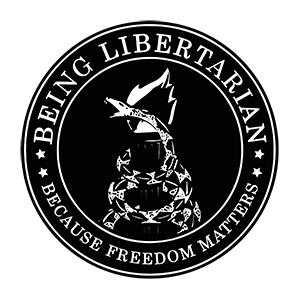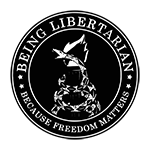The left versus right political dichotomy is by far the dominant system for measuring ideology in America. The realms of left and right are so easy to point out that most of us assume we know what these terms mean.
And yet, there is still a lively debate over the beliefs of left and right, and which ideologies are included within them. To begin dissecting this dichotomy, we must look at how these terms first came about.
The Origin of Left and Right
Left and right were not used as political terms until the French Revolution in 1789. When the French National Assembly met to draft a constitution, the royalists sat on the right, while the revolutionaries sat on the left.
At this point, it was solely a dichotomy. There wasn’t a center-left, or a far-right, or any other nuances. To be on the left meant you were a revolutionary. The left opposed the current political order. They opposed the oppressive power of the rich aristocracy and the monarchy. To be on the right meant you sympathized with the aristocracy and desired to maintain the status quo.
There are many different ways to divide left and right based on the royalists and anti-royalists, which is why defining left and right becomes so difficult. And terms lose meaning and change over time as societies change and to suit those who use them. Two views of left and right will be examined in this first part. These are authoritarian vs. libertarian and liberal vs. conservative.
Authoritarian vs. Libertarian
Some have claimed that the left-right spectrum can be divided in this manner, with authoritarianism on the far-left, and anarchy on the right. There are several problems with this dichotomy, as well as its mirror.
During the French Revolution, it was the right that favored a powerful monarchy, while the left-wing revolutionaries were much closer to anarchy. And throughout history, many anarchist thinkers were Marxists, such as anarcho-communist Peter Kropotkin and Mikhail Bakunin. In fact, the term libertarian originally referred to socialists.
This dichotomy wouldn’t work in the opposite direction, either. Even though many leftists are anarchists, the younger anarcho-capitalist form of anarchism contains many right-wing figures, all of whom strongly oppose the worldview of Marxist anarchists (though they have worked together in the past on common issues). And American libertarians are having greater success running as Republicans than Democrats (i.e. Ron Paul, Rand Paul, Thomas Massie, Justin Amash, and Gary Johnson). In addition, if authoritarianism was solely a right-wing phenomenon, this would put totalitarian dictators like Stalin and Mao on the right.
Such an alignment would also remove any reason for libertarians to declare themselves centrists, or “neither left nor right.” If liberty was exclusive to one side of the spectrum, libertarians would proudly declare themselves a member of that side, rather than placing themselves at the halfway point as they sometimes do.
It doesn’t appear possible to define left and right by their willingness to use government power. At least not without running into loads of exceptions. Throughout history, authoritarians and libertarians have been on both the left and the right.
Liberal vs. Conservative
This dichotomy makes far more sense, but isn’t perfect. The terms liberal and conservative each have two definitions that, while similar, are different enough to easily complicate things.
To be liberal can mean to advocate for the ideology of liberalism, and it can also mean a greater openness to change. In the early days of liberalism, these definitions were far more similar than they are today. The ideology of liberalism is one of free markets, equality under the law, and government by the consent of the governed.
Much of the ideology of liberalism was established and clarified by John Locke, known as the “Father of Liberalism.” The Founding Fathers of the United States were greatly influenced by Locke. In fact, Jefferson’s “life, liberty, and pursuit of happiness” line in the Declaration of Independence was most likely derived from Locke’s “life, liberty, and estate.”
To be a conservative is to conserve the status quo. To be a revolutionary is to be liberal, while those defending the regime are the conservatives. During the American War for Independence, the Founding Fathers were liberal revolutionaries, and the loyalists were conservative. When the United States government was established, they became advocates of the status quo, making them conservatives. If liberal is left and conservative is right, they would have moved from the left to the right despite holding the same ideology. Except the French Revolution happened after the American one, so left and right can only be applied in retrospect.
In America, we must differentiate between classical liberalism and modern liberalism. In a country with a foundation influenced by classical liberal ideology, to be liberal can be either liberal or conservative, depending on the context.
Since liberalism is the foundation, to be conservative in America is to preserve classical liberalism. But to be liberal is also to move to a change in the system. Within the liberal/conservative dichotomy, to be left-wing is to advocate change to the current system, and to be right-wing is to work to preserve the system.
But must conservatives preserve the status quo, or just the tradition of society? Modern American society has changed quite a bit from where it began, in ways both good and bad. Each faction of the right yearns to return to what they consider to be traditional American values. This means that to be right-wing within this dichotomy is not necessarily about maintaining the status quo, but rather restoring tradition to a society that has greatly changed.
We do see some exceptions to this dichotomy. Ayn Rand’s Objectivism is quite a radical individualism that is in no way conservative. She called for a radically different worldview and often criticized conservatives for their religious views. And yet she is considered part of the right. Granted, despite being a radical, her values share similarities with conservatives in the economic realm, which could justify her as part of the right. But she also strongly opposes social conservatism in many respects.
The liberal/conservative dichotomy assumes that left and right are determined by the desire to move in a new direction or the desire to maintain tradition. There are still numerous other dichotomies of left and right, including order vs. chaos, constrained vs. unconstrained, equality vs. hierarchy, nationalism vs. globalism, and others. These will be addressed in Part 2 of this article.









[…] Source […]
[…] artículo apareció por primera vez en Being Libertarian por Nathan Kreider. (adsbygoogle = window.adsbygoogle || […]
[…] to define left and right. The beginning of a full analysis of each interpretation of left and right can be found here, but for the context of this article, they will be defined by their broad priorities, even though […]
[…] Last week’s column addressed the origin of the terms left and right, as well as two of their more common interpretations: authoritarian vs. libertarian and liberal vs. conservative. There still remains quite a few dichotomies that attempt to define left and right, each of which will be analyzed for accuracy. […]
[…] Part 1 of this series addressed the origin of the left vs. right dichotomy, as well as the authoritarian vs. libertarian and liberal vs. conservative dichotomies. Part two addressed Chesterton’s Fence and the order vs. chaos dichotomy. Next we’ll address the equality vs. hierarchy dichotomy. […]
[…] this analysis of frameworks applied to the left vs. right dichotomy, we’ve covered the origin of the left/right dichotomy, as well as the authoritarian vs. libertarian, liberal vs. conservative, order vs. chaos, and […]
[…] this is just one problem with making massive generalizations of “left” and “right” or “pro-Trump” and “anti-Trump.” Guilt must be assigned to the individual, not the […]
[…] far in this analysis of the left vs. right dichotomy, we’ve covered the origins of the dichotomy within the French Revolution, as well as the authoritarian vs. libertarian, liberal vs. […]
Comments are closed.